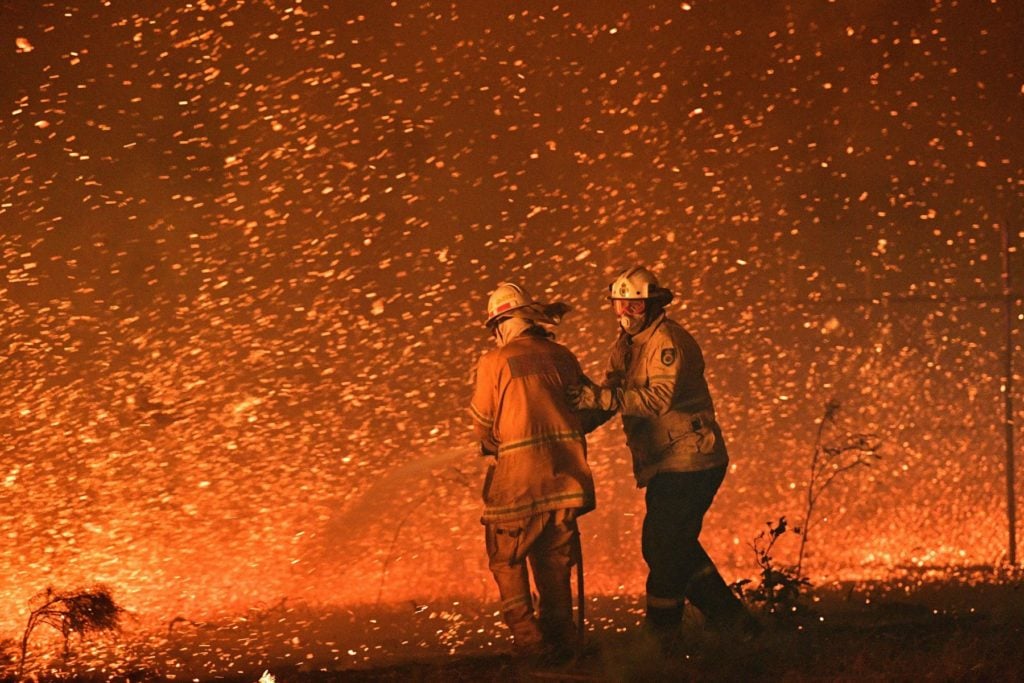Art World
Experts Fear Australia’s Raging Wildfires Have Destroyed 500-Year-Old Indigenous Rock Art in New South Wales
The true extent of the damage is unknown, but experts fear an "irreparable" loss.

The true extent of the damage is unknown, but experts fear an "irreparable" loss.

Amah-Rose Abrams

There is great concern for Australia’s indigenous cultural heritage following the discovery that a rock art site in New South Wales, Australia has been fatally damaged in the recent, unprecedented wildfires that have raged for months. Rock art is an ancient practice which includes paintings, drawing, and engravings made on rock; some of the oldest examples can be found in New South Wales. The country’s recent fires have put many important examples in peril.
The site in New South Wales, with art thought to be 500 years old, is situated on private land west of the city of Armidale, located halfway between Brisbane and Sydney. On discovering the damage the owner of the property on which the rock art site is situated reached out to Steven Ahoy and Callum Clayton-Dixon, representatives of the indigenous Anaiwan tribe, the traditional owners of the land. They visited the site with two academics from the University of New England: Mark Moore, an associate professor of archaeology, and Dr. June Ross, an adjunct professor at the university’s school of humanities.
“The art site is a part of the Anaiwan cultural landscape and is directly connected to other significant art sites in the New England area,” Ahoy said to The Guardian. “These art sites are very rare due to the fact that art sites have been highly damaged or destroyed in the past.”

Anaiwan traditional owners inspecting the damaged to a fire-ravaged rock art site on the New England Tablelands. The chunks of stone littering the site were blown from the granite boulder by intense heat, and the ancient red and orange rock art images are spalled and detaching from the shelter’s wall. Photo by Dr. Mark Moore, University of New England.
There is added concern, as not all rock art sites in New South Wales have been fully documented, meaning there is no way of measuring the true extent of the damage. This site had only been officially recorded relatively recently.
“The rock art sites in the New England granite country are poorly known and have not been comprehensively studied or identified, and this example demonstrates that they are clearly under threat from the new bushfire conditions,” warned Moore.
On assessing the damage Ahoy, Clayton-Dixon, Moore, and Ross came to the conclusion that the damage at this particular site was irreparable. Large shards of granite had sheared off the rocks in the heat and fire-damaged stone tools were found.
“These sites are vulnerable to further damage and erosion,” Moore concluded. “They were already vulnerable because of the drought. Stone artifacts have been exposed, lying everywhere on the ground because there’s no grass to cover them.”
Ahoy spoke of the need to resume traditional bush-burning practices in order to prevent further destruction.
“Fires and other weather patterns have greatly affected the landscape,” he said. “And we as Anaiwan people have not had the ability or opportunity to continue our land management practices.”
A reckoning of the damage will continue.